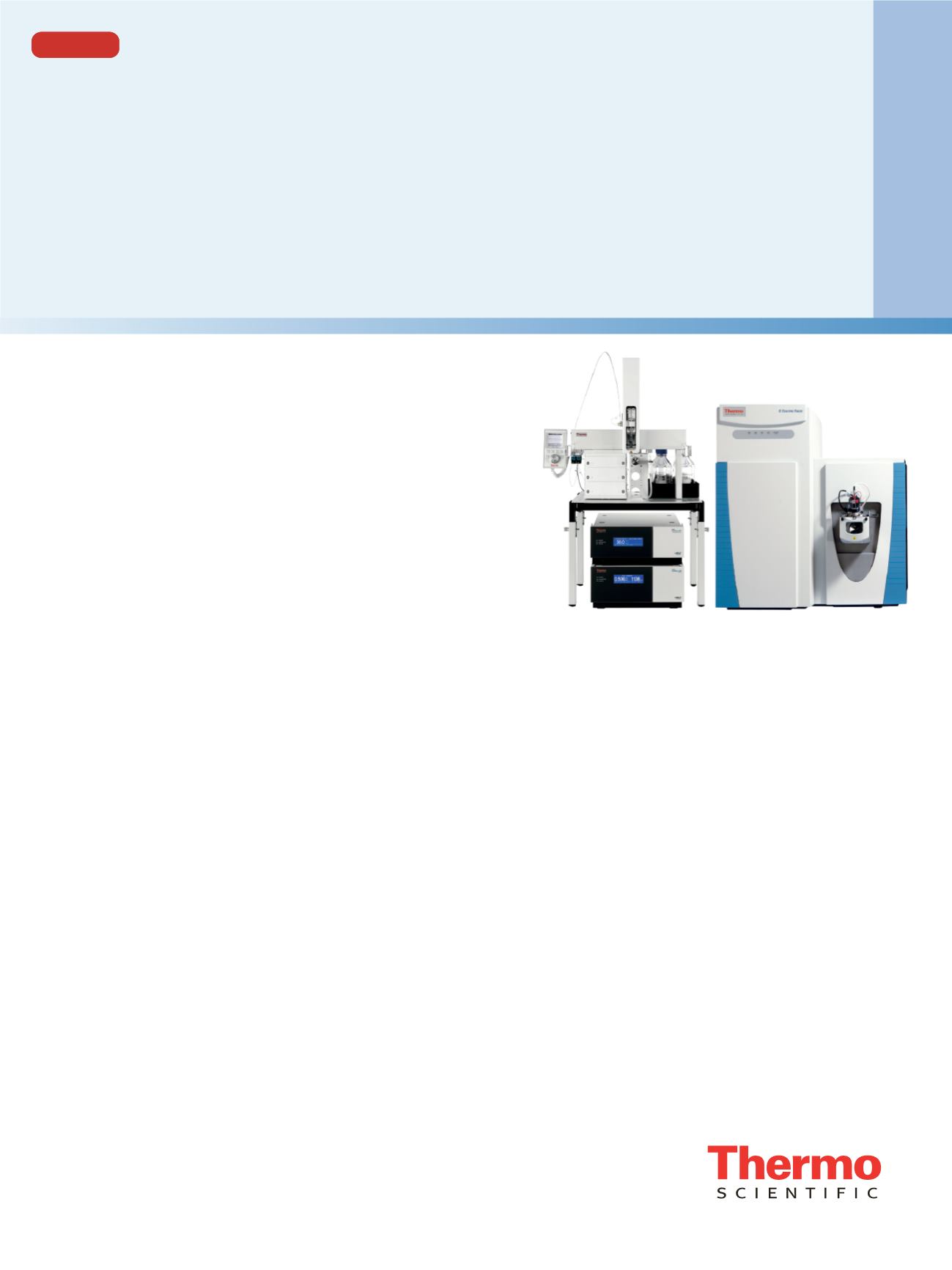

Quantitation of Opiates to Low ng/mL
Levels in Urine for Forensic Use Using
an Affordable, High-Resolution,
Accurate-Mass Mass Spectrometer
Kristine Van Natta, Marta Kozak, Thermo Fisher Scientific, San Jose, CA
Application Note
615
Key Words
Q Exactive Focus, opiates, morphine, codeine, hydromorphone,
hydrocodone, oxymorphone, oxycodone, TraceFinder, forensic toxicology,
drugs of abuse, PRM, parallel reaction monitoring
Goal
To evaluate the performance of th
e Thermo Scientific ™ Q Exactive ™ Focus hybrid quadrupole-Orbitrap ™ mass spectrometer as a quantitative platform
for HPLC-MS analysis of opiates in human urine to low ng/mL levels for
forensic toxicology.
Introduction
Forensic toxicologists need an economical instrument
capable of both screening a large number of compounds
and quantifying smaller panels to industry-established
limits. Here we present a method for quantitation of six
opiates—morphine, codeine, hydromorphone,
hydrocodone, oxymorphone, and oxycodone—in human
urine down to low ng/mL levels. This work was
performed on a
Q Exactive Focus hybrid quadrupole- Orbitrap mass spectrometer.Methods
Sample Preparation
Samples were processed by enzymatic hydrolysis followed
by urine dilution. Briefly, an aliquot of urine was spiked
with stable-isotope-labeled internal standards and
incubated with ß-glucuronidase enzyme. The resulting
mixture was centrifuged and further diluted before an
aliquot was analyzed by gradient HPLC and a Q Exactive
Focus MS. Calibrators and controls were prepared by
spiking compounds into blank synthetic urine in the range
of 1 to 5000 ng/mL.
Liquid Chromatography
Gradient elution was performed using a
Thermo Scientific ™ Dionex ™ UltiMate ™ 3000 RSLCsystem with OAS autosampler (Figure 1). Mobile phases
consisted of 10 mM ammonium acetate with 0.1% formic
acid in water and methanol (Fisher Chemical brand) for
solvents A and B, respectively. The column used was a
Thermo Scientific ™ Accucore ™ PFP, 2.6 µm particle size, 50 x 2.1 mm fused core (p/n 17426-052130). Thegradient was run from 0 to 70% mobile phase B over
3.3 minutes followed by a column wash at 100% B and
re-equilibration to starting conditions. The total run time
was 5.3 minutes.
Mass Spectrometry
Compounds were detected on a
Q Exactive Focus MSequipped with a
Thermo Scientific ™ Ion Max ™ sourceand
a heated electrospray ionization (HESI-II) sprayer. Data
was acquired in parallel reaction monitoring (PRM)
mode. In this mode, a single precursor ion is selected in
the quadrupole with an isolation width of 3.0
m/z
and
fragmented in the HCD cell. The resulting MS/MS
product ions are detected in the Orbitrap detector at a
resolution of 35,000.
Method Evaluation
The method precision and accuracy were evaluated by
running a calibration curve and quintuplicate replicates
of quality controls on three different days. Additionally,
internal-standard response was assessed in 58 donor
samples obtained from a collaborator laboratory and
compared to a sample prepared in water to determine
matrix effects.
Figure 1. Q Exactive Focus MS with UltiMate 3000 RSLC HPLC
pump and UltiMate 3000 OAS autosampler.



















